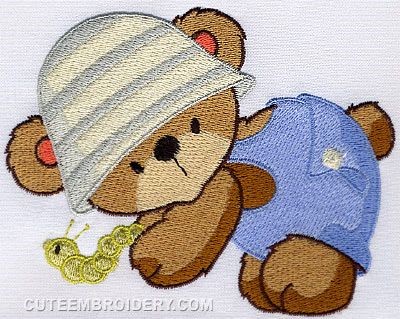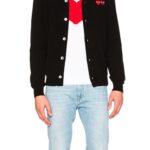Custom embroidery has emerged as a timeless craft that combines artistic flair with practical application. From personalizing apparel to enhancing branding efforts, custom embroidery plays a crucial role in adding sophistication and value to textiles. In this comprehensive guide, we delve into the intricacies of custom embroidery, its applications, and how it continues to evolve in the modern age.
What Is Custom Embroidery?
Custom embroidery involves stitching designs, logos, or text onto fabric using specialized machines or by hand. This process is characterized by its durability, elegance, and the ability to create detailed, textured designs that stand out. Unlike printed designs, embroidery weaves the threads directly into the fabric, ensuring longevity and a premium finish.
The Benefits of Custom Embroidery
- Durability and Longevity
Custom embroidery is known for its resilience. The threads used in embroidery are highly durable, ensuring that designs withstand frequent washing and wear without fading or peeling.
- Professional Appearance
Whether for uniforms, corporate branding, or promotional merchandise, custom embroidery exudes a professional and polished look. The texture and depth of embroidery elevate the overall aesthetic of any item.
- Customization Options
Embroidery allows for endless customization, from intricate patterns to personalized text. With modern technology, even the most complex designs can be brought to life on fabric.
- Versatility
Custom embroidery works on a wide range of fabrics, including cotton, polyester, denim, and even leather. It’s suitable for diverse applications such as hats, jackets, bags, and home décor.
The Process of Custom Embroidery
- Designing
The journey begins with the creation or selection of a design. This can be a logo, artwork, or text tailored to the client’s preferences.
- Digitizing
The design is converted into a digital embroidery file using specialized software. This process ensures that the embroidery machine can interpret the design accurately.
- Machine Setup
The fabric is secured in a hoop, and the embroidery machine is set up with the appropriate threads and needles.
- Embroidery Execution
The machine stitches the design onto the fabric based on the digitized file. Each thread is carefully placed to replicate the design’s details.
- Finishing Touches
Once the embroidery is complete, excess threads are trimmed, and the fabric is cleaned to remove any markings or stabilizers.
Applications of Custom Embroidery
- Corporate Branding
Custom embroidery is a popular choice for businesses looking to create branded uniforms, promotional products, or gifts. Embroidered logos on polo shirts, hats, and bags enhance brand visibility and professionalism.
- Team and Sportswear
Sports teams often use custom embroidery for jerseys, caps, and jackets. The durability of embroidery makes it ideal for active wear, ensuring designs remain intact through intense use.
- Personalized Gifts
From monogrammed towels to embroidered baby blankets, custom embroidery adds a personal touch to gifts. These items are cherished keepsakes that stand out for their uniqueness and quality.
- Fashion and Apparel
Designers incorporate embroidery into clothing to add intricate patterns and textures. Embroidered elements are often seen on dresses, jeans, and accessories, blending traditional craftsmanship with contemporary style.
- Home Décor
Custom embroidery is widely used in home décor, including curtains, pillowcases, and table linens. These designs add elegance and personality to living spaces.
The Role of Embroidery Digitizing in Custom Embroidery
Embroidery digitizing is a critical step in the custom embroidery process. It involves converting designs into a machine-readable format, ensuring precision and consistency during embroidery. High-quality digitization ensures:
Accurate Stitch Placement: The machine replicates the design flawlessly.
Optimal Stitch Density: Prevents fabric damage and ensures the embroidery looks clean.
Fabric Compatibility: Adjustments are made based on the fabric’s texture and type.
Custom Embroidery vs. Screen Printing
While both techniques are used for fabric decoration, custom embroidery offers distinct advantages:
Durability: Embroidery lasts longer than screen printing, which can fade or crack over time.
Premium Appeal: The textured and raised effect of embroidery gives a more upscale look.
Limited Color Constraints: Unlike screen printing, embroidery isn’t limited by the number of colors, as thread colors can be easily swapped.
However, embroidery is generally more suitable for smaller, intricate designs, while screen printing is cost-effective for large, flat designs.
Choosing the Right Custom Embroidery Service
- Experience and Expertise
Select a provider with a proven track record in handling diverse embroidery projects. Check their portfolio to assess the quality of their work.
- Customization Capabilities
Ensure the service offers comprehensive customization options, including thread colors, design adjustments, and fabric compatibility.
- Technology and Equipment
Modern embroidery machines and digitizing software are essential for producing precise and high-quality results. Ask about the tools the provider uses.
- Customer Reviews
Reading testimonials and reviews can provide insights into the provider’s reliability, customer service, and overall satisfaction levels.
- Pricing and Turnaround Time
Compare pricing among different providers, keeping in mind the balance between cost and quality. Additionally, confirm their ability to meet your deadlines.
Tips for Creating Stunning Custom Embroidery
Choose Simple Designs: Intricate details may not translate well in embroidery. Simplify the design for better clarity.
Select the Right Fabric: The texture and thickness of the fabric can impact the embroidery’s appearance. Choose fabrics that complement your design.
Use High-Quality Threads: Premium threads enhance the embroidery’s durability and vibrancy.
Test Samples: Request a test sample before proceeding with bulk production to ensure the design meets your expectations.
Challenges in Custom Embroidery and How to Overcome Them
- Fabric Distortion
Heavy stitching can cause the fabric to pucker. Using stabilizers during embroidery can mitigate this issue.
- Thread Breakage
Low-quality threads or incorrect tension settings can lead to thread breakage. Invest in high-quality threads and ensure proper machine maintenance.
- Color Inconsistency
Thread colors may not always match the design. Test threads beforehand to ensure accuracy.
Conclusion
Custom embroidery combines timeless craftsmanship with modern technology to create designs that are both beautiful and durable. Whether for personal projects, corporate branding, or fashion, embroidery adds a touch of sophistication to any fabric. By choosing a reliable embroidery service and paying attention to detail, you can ensure stunning results that stand out.


